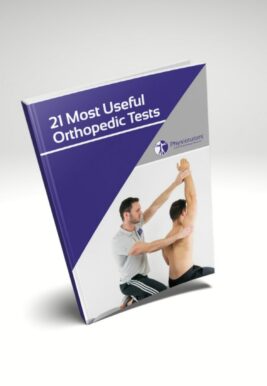Learn
Modified Bent Knee Stretch Test | Proximal Hamstring Tendinopathy
The clinical assessment of chronic proximal hamstring tendinopathy in athletes is a challenge to sports medicine.
For this reason, Cacchio et al. (2012) evaluated the reliability and validity of the modified Bent-knee stretch test to diagnose proximal hamstring tendinopathy in athletes with the presence of symptoms for at least 6 months. They compared their findings to the clinical diagnosis of an expert physician confirmed by means of MRI and found both a high intra- and inter-rater reliability above 0.8 and high accuracy with a sensitivity of 89% and a specificity of 91%.
Although this test has high accuracy values, the fact that this is the first and only study evaluating this test makes us give it a moderate clinical value in practice for now until more research can confirm its high accuracy.
To perform the test, the patient is in supine position with the legs fully extended. The examiner grasps the symptomatic leg behind the heel with one hand and at the knee with the other hand, maximally flexes the hip and the knee, and then rapidly straightens the knee.
This test is rated positive if the patient’s familiar symptoms are exacerbated.
21 OF THE MOST USEFUL ORTHOPAEDIC TESTS IN CLINICAL PRACTICE

Other orthopedic tests that assess for proximal hamstring tendinopathy are:
Like what you’re learning?
BUY THE FULL PHYSIOTUTORS ASSESSMENT BOOK
- 600+ Pages e-Book
- Interactive Content (Direct Video Demonstration, PubMed articles)
- Statistical Values for all Special Tests from the latest research
- Available in 🇬🇧 🇩🇪 🇫🇷 🇪🇸 🇮🇹 🇵🇹 🇹🇷
- And much more!








